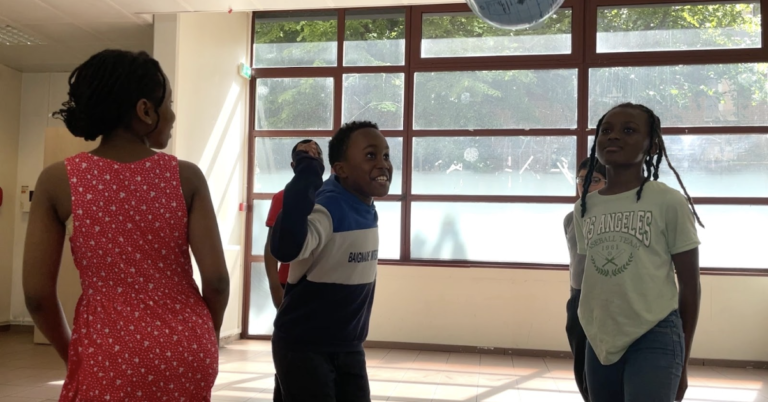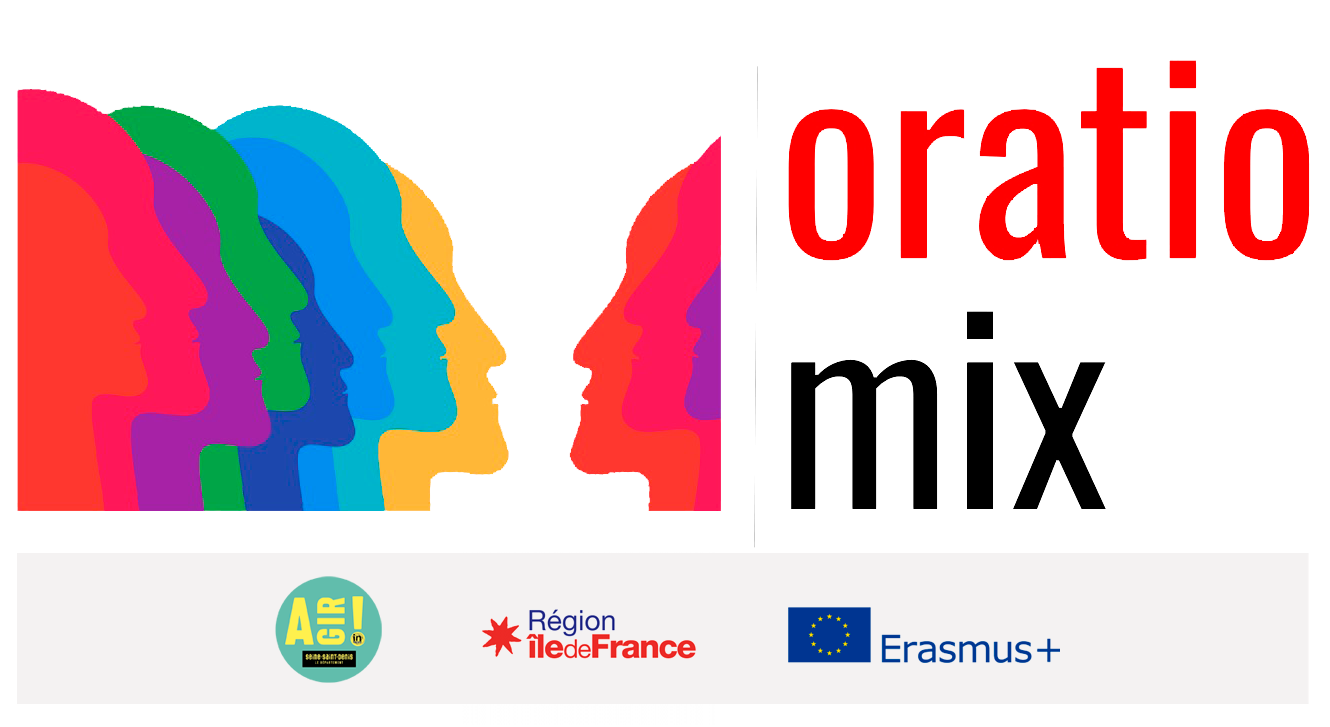Workshop 3 : Representation part 2
Setting up: what do we need?
– Images of the pairs game
– A workspace: the room provided must be large enough to accommodate all the participants and allow freedom of movement, as the workshop requires physical commitment.
The participants
Nursery school pupils aged between 4 and 7, with a maximum group size of 30.
Teachers
School teachers, educators, drama teachers.
Aims of this workshop
work on cultural references
work on physical embodiment
Time required
45 minutes
How it works
This workshop uses theatrical techniques and physical expression.
Aim
At the end of the session, the children will have :
Developed mental gymnastics aimed at assimilating cultural references
Work on their imagination by creating character postures
1. Start of session
In the same way that clapping is established as an end-of-session ritual, we suggest that you have a recurring exercise to create a ritual at the beginning of the session. Once again, this helps to establish points of reference for the students and helps them to develop within a reassuring framework. It also helps them to differentiate between the ordinary classroom, the playground and the drama workshops.
The clapperboard
In a circle, the children pass a clap to the person next to them (clapping hands) as they go round the circle. For the clap to be passed, the pupils must look each other in the eye before clapping their hands!
2. The steps
You can repeat the instructions seen last time (walk, stop, youpla, rhythms, numbers, environments) to see how the pupils develop from one session to the next.
- Environments: the pupils are asked to move as if they were in very specific and different environments. In turn, we evoke a beach of burning sand, a frozen lake (without skates, of course), a floor made of chewing gum, on the moon, with lead soles, against the wind, with water up to your ankles, then up to your thighs and finally up to your waist!
- We walk through space in the manner of the different fairytale characters we’ve identified: the princess, the knight, the ogre, the witch, the wolf, the little boy/girl, the fairy, the dragon…
Then we walk through space like the animals in the story A Pebble Soup
3. References
Pairs: each pupil is given an image (see the image bank called The Pairs Game in the appendix). Each image is associated with another in order to create pairs. Pupils have to make contact with each other to try and find their pair. The images refer to famous fairy tales or to stereotypes drawn from fairy tales. For example, the witch is associated with her cauldron and Cinderella with her shoe. However, the wolf could be associated with several other images (Little Red Riding Hood or the 3 little pigs). The pupils have to find the right combination so that no one is left alone! To do this, you can use the image bank to create a trio if your group is an odd number.
Once the students have all found their pairs, they must mime what they are to get the rest of the class to guess. The presenter can help and encourage the students on stage by asking them questions. For example, for the witch and the cauldron: what is the shape of this object and how could you represent this shape with your body (sitting, bending over, etc.), what is the witch doing in her cauldron and what gesture does it correspond to? For the 3 little pigs: what are they making and what is the wolf doing?
- tableaux vivants: The pupils work together to create tableaux vivants. First they are given a familiar place, such as the classroom, then we move on to the imaginary: the farm, the forest, a garden, a pizza. You can go even further by giving them a specific theme: fairy tales, Christmas, Halloween, etc.

4. Closing ritual
Clapping
The leader stands in front of the other members of the group so that everyone can see him or her. He or she places his or her arms horizontally and claps his or her hands above his or her head. The others must follow suit, respecting his or her rhythm. Then, little by little, he/she will speed up until there is applause.
